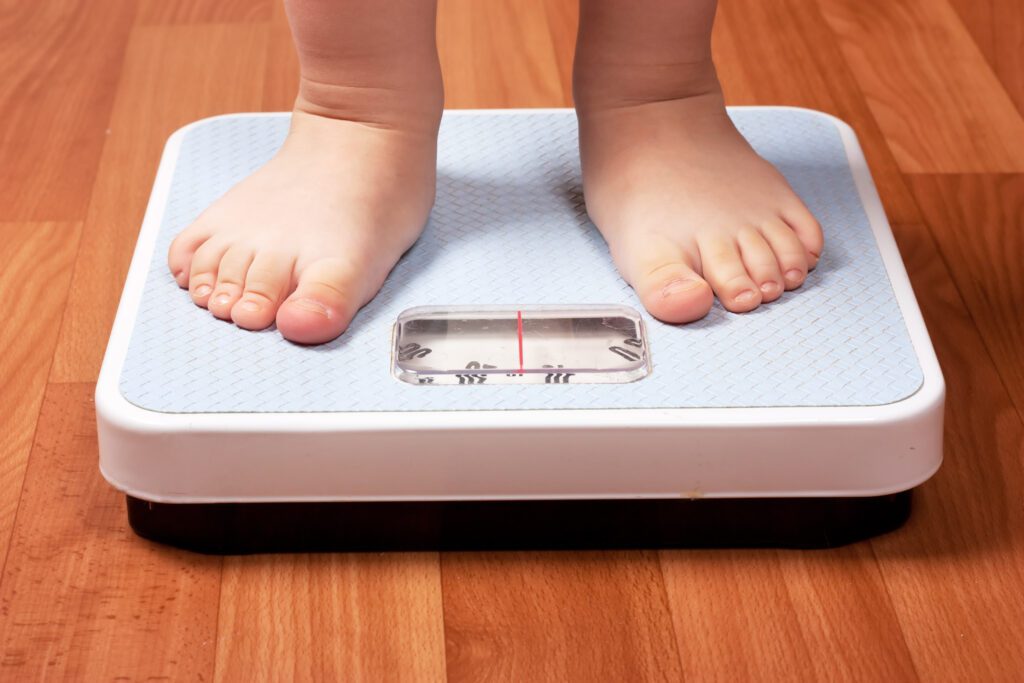National Epidemic: Get the Facts on Childhood Obesity
September is National Childhood Obesity Awareness Month. While Florida ranks 35th in the nation for childhood obesity, the problem is widespread across the country. Knowing the ins and outs of the disease is the first step to ending it. Take our quiz on childhood obesity to learn the facts.
- Which of the following is the official definition of obesity?
A. A body mass index (BMI) at or above the 65th percentile of those in the same age and sex categories.
B. A BMI at or above the 75th percentile of those in the same age and sex categories.
C. A BMI at or above the 85th percentile of those in the same age and sex categories.
D. A BMI at or above the 95th percentile of those in the same age and sex categories. - True or false? While a high BMI may be a sign of high body fat, BMI doesn’t measure body fat directly. It alerts a child’s healthcare provider that a child may need more tests to see whether excess fat is a problem.
- What percent of children and adolescents in the US are considered obese?
A. Nearly 10 percent
B. Nearly 15 percent
C. Nearly 20 percent
D. Nearly 25 percent - How many children and adolescents in the US are considered obese?
A. 11.7 million
B. 12.7 million
C. 13.7 million
D. 14.7 million - Which of the following is a reason childhood obesity is considered a problem and a health epidemic?
A. Children who have obesity are more likely to carry the condition over into adulthood.
B. Children who have obesity are at a higher risk of developing many health conditions.
C. Children who have obesity are at a higher risk of experiencing bullying, social isolation, low self-esteem, and depression.
D. Obesity is associated with poor academic performance and a lower quality of life.
E. All of the above - Which of the following are obesity-related health conditions?
A. High blood pressure, high cholesterol, heart disease, and stroke
B. Type 2 diabetes and certain cancers
C. Breathing problems such as asthma and sleep apnea
D. Joint problems and musculoskeletal disorders such as osteoarthritis
E. All of the above - True or false? Recent statistics show rates of childhood obesity dropped as the head of a household’s level of education increased and/or as the income of the household increased, meaning obesity affects those with the lowest socio-economic status the most.
- True or false? Childhood obesity is a complicated disease that has many contributing factors. It’s not laziness or a lack of willpower.
- Which of the following are factors that contribute to childhood obesity?
A. Shared family behaviors such as poor eating habits and eating a lot of unhealthy food that is high in sugar and low in nutritional value, like fast food.
B. Spending less time outdoors and more time indoors being inactive.
C. Genetics, in that children whose parents or siblings have obesity may be at an increased risk of developing the condition themselves.
D. Engaging in mostly sedentary activities like video games, tablets, and smartphones, rather than engaging in physical activities.
E. All of the above - Which of the following is a way you can help your child if you fear he or she is obese?
A. Make an appointment with your child’s pediatrician to have your child tested and to get information on topics like healthy diets and how much physical activity your child should get.
B. Focus on your child’s health and wellbeing rather than their weight.
C. Model healthy habits when it comes to eating and physical activity.
D. Actively limit screen time and replace it with physical activities you can do as a family, such as bike-riding, hiking, and swimming.
E. All of the above
compiled by ERIKA ALDRICH / Resources: The National Library of Medicine, Centers for Disease Control and Prevention, and The Cleveland Clinic.
ANSWERS
D. Obesity is BMI at or above the 95th percentile.
True. BMI is used as an indicator in diagnosing obesity.
C. 19.7 percent of US children and adolescents are obese.
D. 14.4 million US children and adolescents are obese.
E. All of the Above
E. All of the above
True
True
E. All of the above
E. All of the above
